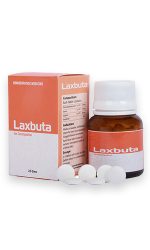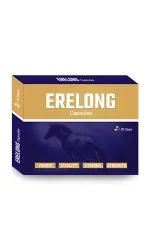Throughout their evolutionary history, multicellular animals have been infected by microorganisms. In response, they developed a series of defenses that are used today. Physical and chemical barriers, such as the skin and mucous surfaces, confine microorganisms to the external surfaces of the body and, when pathogens manage to break through these barriers, they are sought and destroyed by the immune system. Its objective is to recognize foreign invading agents, with the potential to cause disease (known as a pathogen), prevent their spread and, finally, eliminate them from the body. Thanks to this system, animals have the ability to resist almost all types of microorganisms or toxins that tend to damage tissues and organs and still, often, protect us from infections and cancer cells.
And some pathogens are responsible for the great knowledge acquired by scientists. Knowledge is generally acquired little by little, but the advent of HIV has produced a leap in that knowledge. And now with SARSCOV-2, it seems that again scientists are at an impasse, and for that reason they are going deeper and deeper into research and learning more about the immune system. Why are they at an impasse? Why the opinions and the results of the research differ from what was established until then. People who have certainly had COVID-19, where antibodies are not detected; people who where the presence of antibodies has been detected and who are no longer found; people who defend themselves well, with few symptoms; people who apparently have natural resistance; in short, there is no standard response behavior to this virus.
And as new researches and new discoveries are happening, leave your immune system activated using ANBUTA PLUS daily.
This system is composed of numerous types of cells and a variety of molecules which are spread throughout our body. Immune system cells are normally present as cells circulating in the blood and lymph, as anatomically defined collections in lymphoid organs and as cells dispersed in virtually all tissues. Like all blood cells, the cells of the immune system also originate in the bone marrow, where many also mature. The hematopoietic stem cells of the medulla originate precursor cells or basically 3 groups of specialized progenitor cells: lymphoid progenitor and myeloid progenitor, which will give rise to leukocytes or white blood cells, and the erythroid progenitor, which will give rise to erythrocytes or red blood cells. The lymphoid progenitor divides and differentiates to give rise to lymphocytes (B cells, T cells and NK cells). The myeloid progenitor divides and differentiates to produce at least six cell types: granulocytes (neutrophil, eosinophil and basophil); the mast cell, the dendritic cell and the circulating monocyte, which originates the macrophages residing in the tissues. The erythroid parent gives rise to erythrocytes and megakaryocytes. Lymphocytes are the coordinating cells of the immune system. However, all lymphocyte functions depend on non-lymphoid cells, the accessory cells, which are not specific for different antigens. Accessory cells are mononuclear phagocytes, dendritic cells and several other cell populations, such as granulocytes and mast cells.
Lymphocytes – Lymphocytes are the only immunocompetent cells capable of specific antigen recognition and any macromolecule, viral particle or cell that contains a recognized structure and linked by an immunoglobulin or T cell receptor. When a student looks at a blood smear histological slide, the lymphocytes all look the same, as they are morphologically homogeneous, but they consist of distinct subsets, that perform different functions and that can be distinguished phenotypically. Lymphocytes called B are the cells that produce antibodies (glycoproteins that bind to antigens). Some lymphocytes called T-cells that express surface CD4 function as auxiliary cells to stimulate the production of antibodies and to activate macrophages to destroy phagocyte microorganisms. CD4 T lymphocytes can still be divided into Th1 and Th2 depending on the secreted molecules. Other T lymphocytes express CD 8 and function as cytotoxic cells to destroy target cells that are expressing foreign antigens. Other lymphocytes called NK lyse virus-infected cells and certain tumor cells.
They mature in the thymus, which is why they are called T lymphocytes. In this organ, T lymphocytes acquire specific CD4 or CD8 membrane receptors, in addition to a TCR (T cell receptor), most of which have αβ chains (95%) and a few gamma-delta chain (γδ). They are activated by cells presenting antigens and cytokines. Its main function is to act on specific or acquired immunity. They differ according to their function in: cytotoxic (CD8), auxiliary (CD4), natural killer (NKT), memory (CD45), regulatory (FOXP3) or gamma-delta (γδ). Within these groups there are still several subgroups. Regulatory T cells (Treg) are a subpopulation of T cells with distinct development and function, which express the forkhead box transcription factor P3 (FOXP3) and are indispensable for maintaining immune tolerance to self and homeostasis. Dysfunctions in these cells can lead to serious problems such as fatal autoimmune diseases, immunopathologies and allergies.
These lymphocytes, when activated by cells such as macrophages, become able to perform their functions. And who activates the accessory cells to make this link? ANBUTA PLUS.





